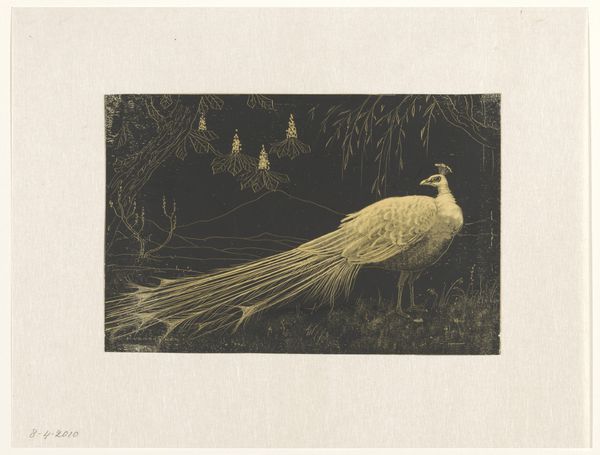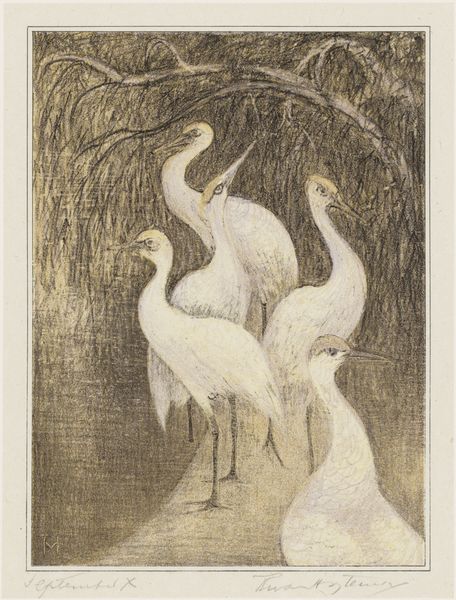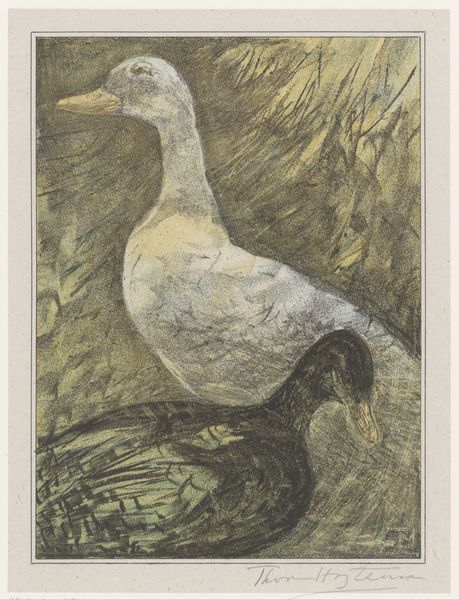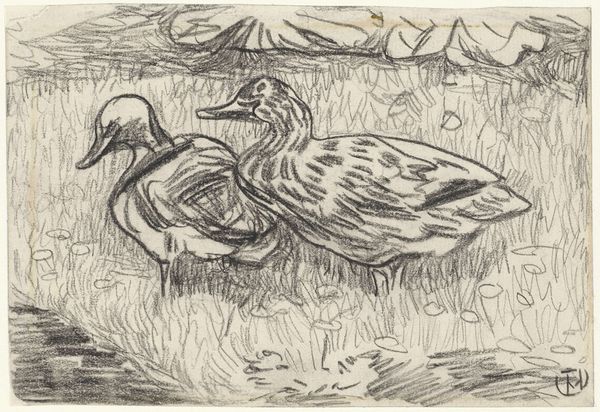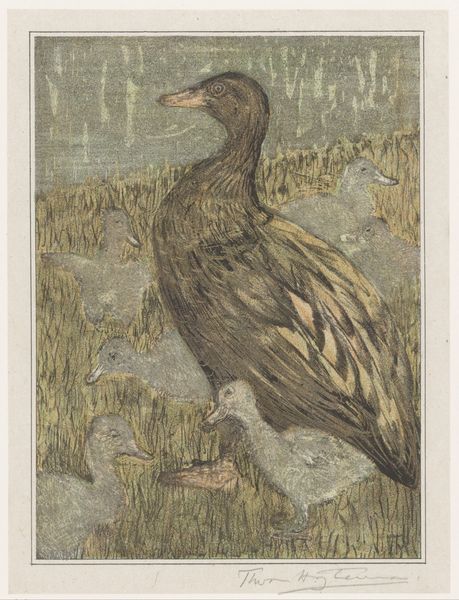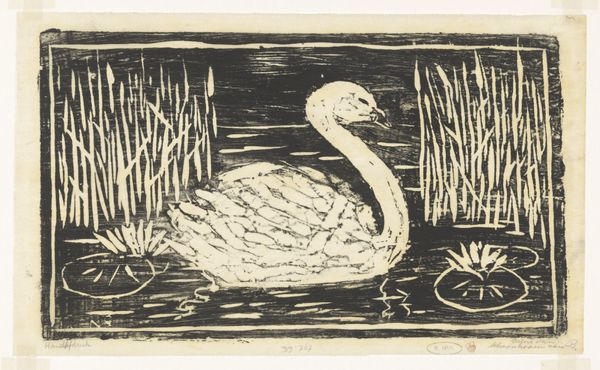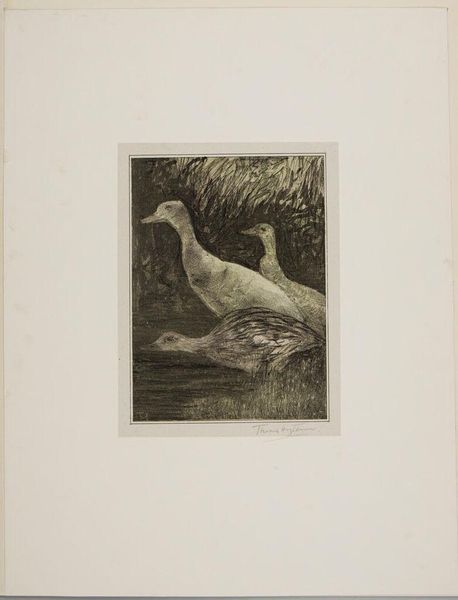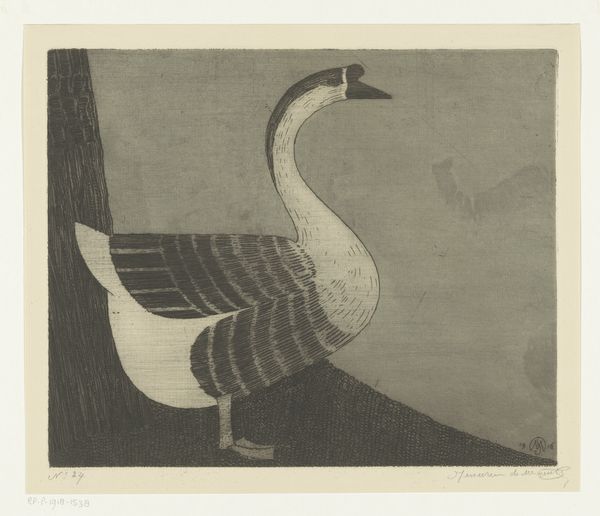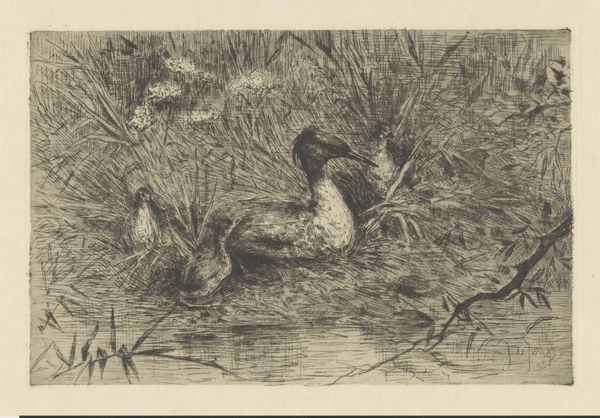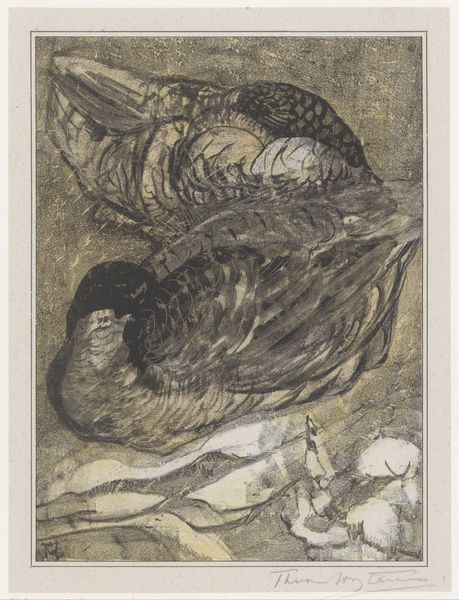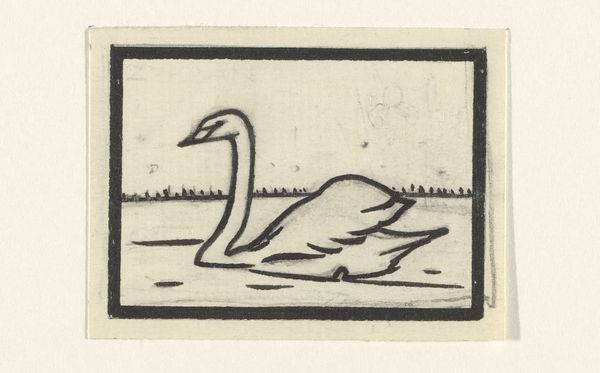
Dimensions: height 152 mm, width 210 mm, height 339 mm, width 464 mm
Copyright: Rijks Museum: Open Domain
Curator: Here we have "Ooievaar in nest" – "Stork in Nest" – a drawing in colored pencil and paper, created sometime between 1878 and 1915 by Theo van Hoytema. Editor: Immediately, I see a sense of serene isolation. The stork is almost camouflaged in the foliage, it’s rendered in a lovely impressionistic style and conveys this feeling of natural concealment. Curator: Right, van Hoytema was quite fascinated by nature. We should remember this piece emerges from a period of increasing urbanization and industrial growth in the Netherlands. Artists responded in different ways to those shifts, but van Hoytema chose to focus on, and enshrine, these pastoral visions. Editor: Which highlights the socio-political implications, doesn’t it? By emphasizing this harmonious image of nature, it’s almost a subtle commentary, perhaps even a lament for what was being lost or altered by the industrial age. Where does the stork, as a symbol of birth and good fortune, fit into that commentary? Curator: Exactly! The stork's association with bringing new life becomes particularly poignant when seen against that backdrop. The rapid transformations and exploitation of resources going on might well be an elephant in the room. We know that van Hoytema became increasingly focused on social reform later in his career, perhaps seeing his art as a way to engage in it. Editor: The drawing itself is fascinating, with these subtle pastel hues to create a natural sense of life and energy. But thinking about this, it gives a chance to reflect more on contemporary conversations around ecological devastation as part of late-stage capitalism, how artistic depictions of animals can create more urgent awareness, or deeper forms of political consciousness in the 21st century. Curator: Definitely, these echoes across time add yet another fascinating layer to "Stork in Nest." Editor: It’s a poignant piece—it holds up a mirror to our contemporary moment, making us question how we reconcile progress and preservation in our own era.
Comments
No comments
Be the first to comment and join the conversation on the ultimate creative platform.
